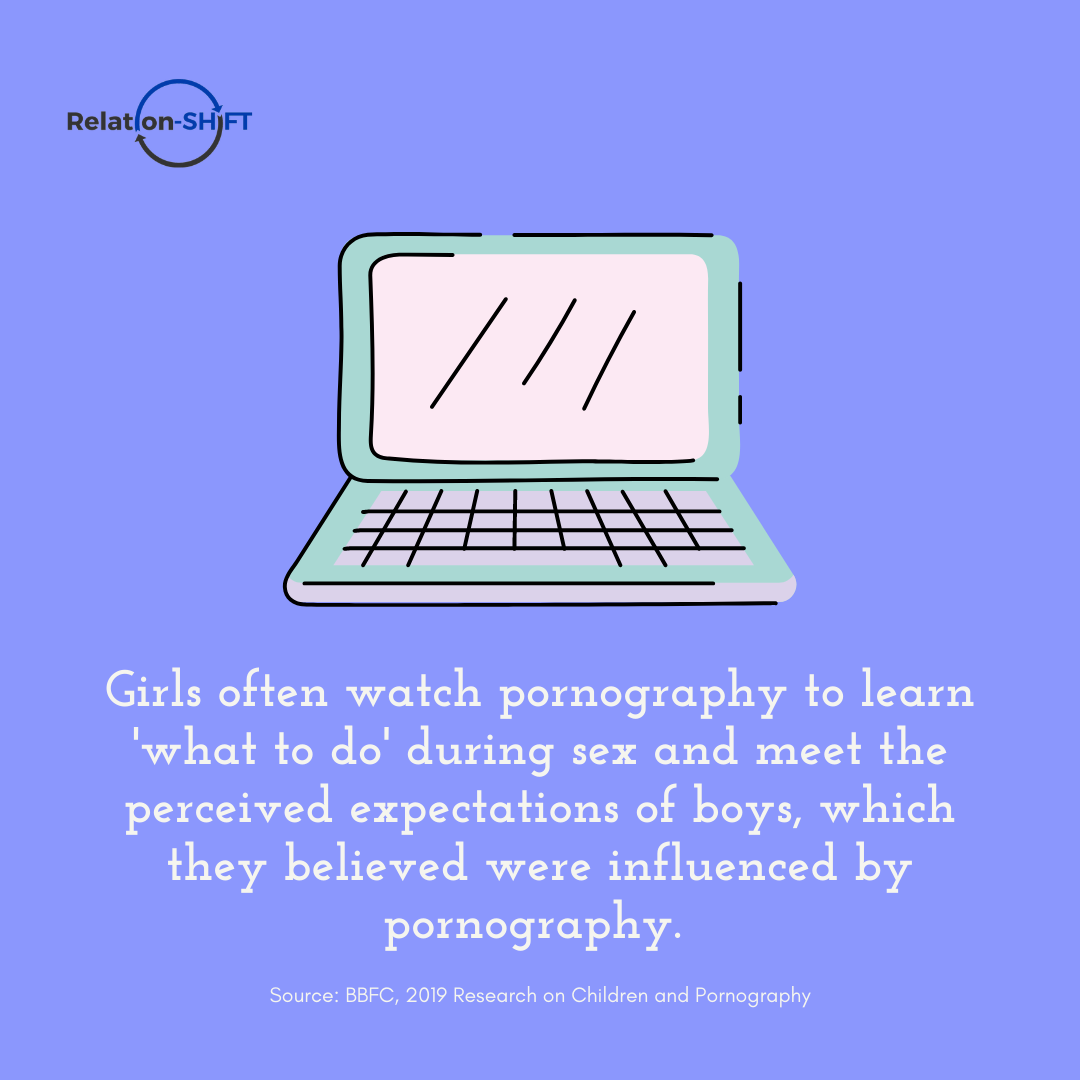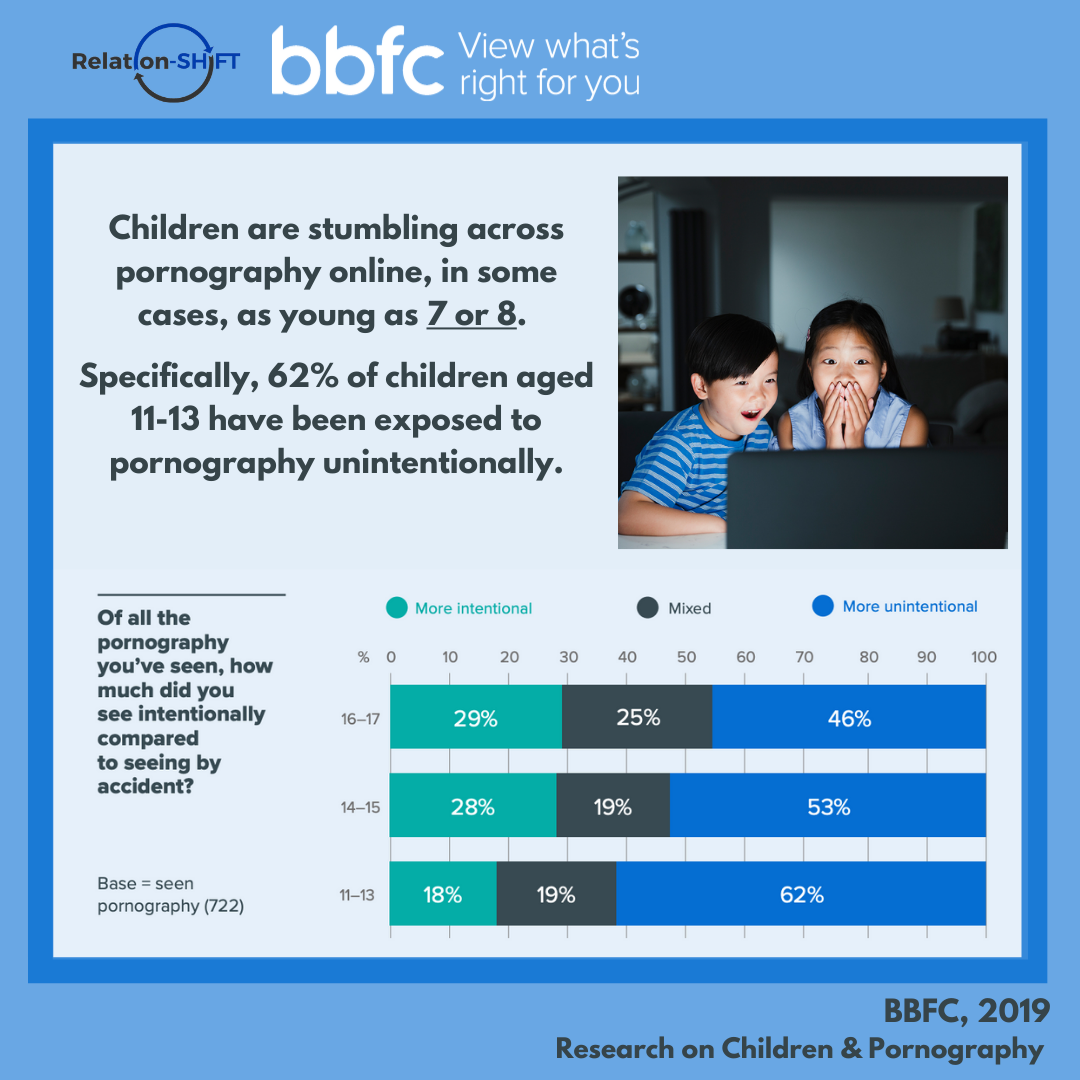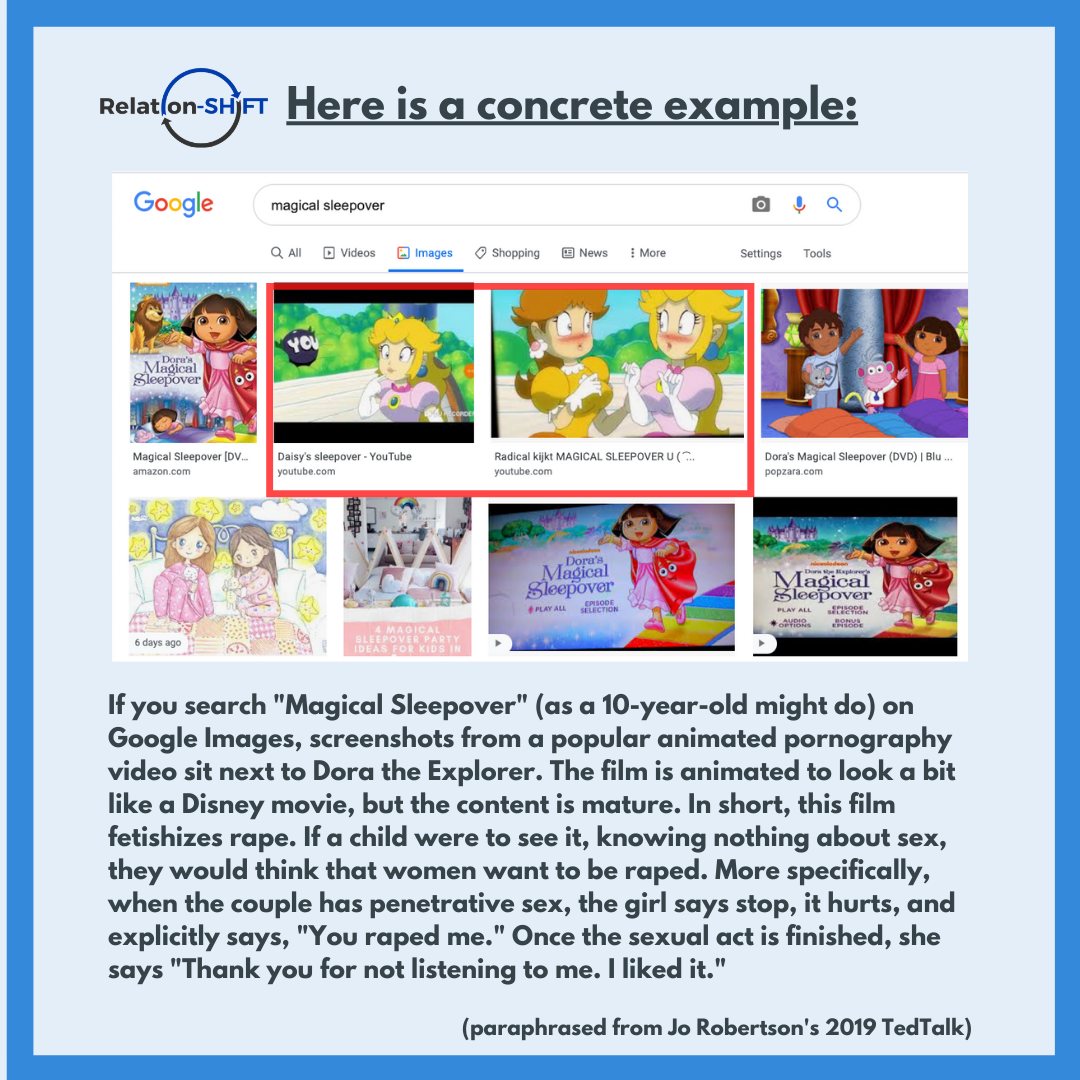Think about it, nowadays, if kids are curious about sex, their dictionary is Google...and it has videos. Studies confirm kids are, in fact, very curious and 60% of kids surveyed by the National Union of Students (2014) reported that they watch porn in order to learn more about sex and fill gaps in their sexual education. This is concerning because of the unrealistic expectations about sex and bodies portrayed in pornography. Unless we initiate conversations about sex, porn will continue to educate children simply seeking reliable, factual information.
Over time, we hope you can prove to yourself and your kids that is normal and natural to talk openly about one of the most amazing experiences available to human beings: true intimacy. Talking to your child about sex can directly shape their opinions on the subject and they can learn that sexual intimacy can be beautiful and enjoyable in respectful, compassionate relationships (themes pornography often fails to communicate).
Conversations about pornography are awkward for you and your child, so how do you broach the topic? Here are some of Relation-Shift’s general tips:
Humanize yourself and the issue
You can break the ice by acknowledging your own discomfort or trepidation speaking about pornography. You may want to share your own blush-worthy personal experiences that shaped your value system and expectations about pornography. This honest, open communication can break the ‘fourth wall’ of parenting, humanizing you and the issue at hand. Your kids can begin to see that their parents were once teenagers too and feel more comfortable opening up. They need to know that you can support them and talk openly even in the face of tough topics.
Establish a foundation where you and your child can talk about this kind of stuff
We want our children to be open to our influence. In order to develop that healthy, trusting relationships, regularly engage them in conversations about sex. To encourage this open communication, coach your child to confide in you. Ensure them that you want and expect them to come tell you when others (including friends and family) or they themselves have acted inappropriately and praise them when they do just that. Assure then that you are the best source of reliable, honest information. This practice also reduces the pressure on you to have the one ‘perfect’ “sex talk.” No one can get it exactly ‘right’ the first or even second-third-or-fourth time. Therefore, instead of being a one-time event, make sexuality an ongoing, ever-evolving discussion as your children grow and mature.
Recognize how important you are to their healthy sexual development.
Just like any other aspect of their wellbeing, kids need support developing healthy sexuality. Therefore, ensure your conversations go beyond just the risks and dangers of sex. Go into depth (as best you can) about the emotional, moral, and physical aspects of sexuality. Instill positive values about their bodies and sex by teaching them about consent, body acceptance, sexual safety, personal responsibility, pleasure, joy, and overall health. Furthermore, deeply consider the way you are approaching these conversations. Parents’ negative reactions can often be one of the greatest harms to this development.
Here are some suggestions to avoid shaming your child about these essential issues:
Do your best to speak and listen to your child nonjudgmentally, without blaming or punishing them.
Reign in any feelings of anger that may arise. Antithetical to your goal, anger can result in shame, withdrawal, and cut off communication. Talking about these issues is necessary to establish family expectations about pornography for the future.
If you feel you cannot speak calmly or rationally with your child in the moment, express that and put a pause on the conversation until you can.
Respect and validate their thoughts, feelings, and experiences by listening kindly and thoughtfully.
Answer their questions openly, honestly, and sincerely. Using proper names for body parts and sexual processes can help to demystify sex.
State the facts, instead of placing blame. Pointing fingers can only make children more defensive. Facts about the harm pornography may have on them and their future relationships can help them understand why it may be best not to watch it.
Provide other examples of healthy and unhealthy portrayals in the media (across TV shows, movies, video games, etc).
If these readily come to mind, great. If not, initiate dialogue when you come across examples in real-time. This could be anything from a sexually explicit line in a song, to an advertisement displaying a scantily dressed woman. Develop your child’s media literacy by discussing the disrespectful and distorted nature of sexual cultural artifacts.
Try to give them agency to make their own decisions about media usage.
Instead of telling them what to do, ask your kids what they think about pornography. Do their own and family values align with the images and videos they consume? Why or why not? How do they feel watching pornography? This interrogation can help develop their capacity to make healthy media choices for themselves, instead of shaming them for their curiosity. Curiosity is normal, pornography is not. Also, consider not taking their technology away. This punishment may keep them from coming to you about issues that arise in the future. Keeping a secret from you is often better than being grounded from using their technology.
Use language that is both age-appropriate and appropriate for your unique family.
We hope you found these tips helpful! If so, stay tuned for our next post: Scripts for Talking to Elementary, Middle, and High School Students About Pornography! We curated these resources using peer-reviewed research that considers children’s emotional, cognitive, and physical development. Coming soon, our scripts will be organized into three age-buckets: elementary, middle, and high school, though we acknowledge that you know your child and their needs best. We hope that you can pull inspiration from these guides when approaching the sticky issue of pornography in the best way for your family.




